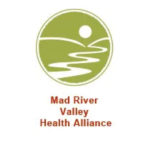I’ve often been in a position to speak about a person, whether during the middle school cross-country banquet for my team, at some other celebration for someone, or even at a memorial service. There’s a lot of deep diving that goes on about the person who I am going to speak about. What I mean by that is that I have to figure out who they are, who they are to me to be honest. This doesn’t take a lot of research on Google, or interviewing people in dark rooms. It’s not about just shining a really good light on somebody in front of their friends and family. Rather, it is the kind of deep digging that gets through my own biases. The kind of research I’m talking about is letting go of that first story that I have about somebody (or that one I’m sitting with and I don’t even know it) and looking at a fuller, more truthful picture of who they are not just in the world, but to me.
It’s not an easy thing for any of us to do, getting past our “stories”, or knee-jerk snap judgments of who others are. Why don’t we do this you might be thinking to yourself? It’s simple. Because it’s easier. We’re not all twisting our evil mustaches, or heartless monsters, it’s a simple matter of calories. Our brain consumes the most calories of any other organ in our body. We didn’t survive because we sat in a la-z-boy 200,000 years ago and ate bags of potato chips, while dinosaurs ignored us because we were sitting really still. We survived because we conserved our calories. Our Brian’s were like giant Kodak cameras taking vital mental snapshots, so we didn’t have to process the whole of every situation, just whether we were going to eat or get eaten.
It’s our reason, ingenuity, and our ability to make snap judgments in order to stay away from dangerous things, and not just wait for uncertainty to unleash itself on us, that keeps us alive, and on top of the food chain. The problem is that 200,000 years later we’re still doing it. Taking vital mental snapshots and taking them as full truths. But instead of being about life threatening situations, it’s about people. I catch myself saying (in my own head most of the time) that a person is either a “fill in the blank” person or ”opposite of that” person. I often don’t even acknowledge that I only know them in one way…
If I take a look at all the coaching that I do for cross country, I’m not gonna’ say that it’s easy to keep an open non-snap judgment mind when it comes to kids, but it’s a heck of a lot easier than it is with adults. I believe a lot of the time this is because we’ve been hurt by other adults. And hurt is threatening., Not life threatening… but emotional pain does run a fairly close second to the fear of actual dying. When it comes to my cross country kids, I can tell you they aren’t perfect. But, they’re all really good kids. Do they all have baggage? Everyone does. Can they all act out of turn and behave like little jerks? Sure. But, for the most part, they all just wanna’ have a connection with their friends, they all just want to be liked, and above all… like ALL of us:
They just wanna be seen.
Really seen. And what a great place to start whenever we find ourselves thinking that we know the totality of someone. When we’re trying to get to know someone more fully. If we really think about it, we all just want to be truly seen, fully understood, and have others connect with us in a way that’s authentic and real. I know that’s what I want. I want to be forgiven for the things that I don’t do so well, not just by others, but by myself.
I want others to recognize that I’m trying. I’m not perfect. But, I know I’m valuable to others. I know I can be trusted. I’m worthy of love. These are the same for just about everybody. These are the things I keep in mind when I have to give a speech about someone.
But what about on the day-to-day? How do I lay down my harsh judgment in the ‘Court of Lou’ about who is going to be considered a decent person? When I pull up to the gas station and the attendant is a bit ‘short’ with me, how can I see them fully and recognize that they are worthy of my consideration and kindness. How do I not let their short tone define the totality of how I see them. Or the waitress at the diner, or my dental hygienist, the administrative assistant at the school office, or the patient coming into my office? How do I fully see the person in front of me whether it’s someone with whom I’ve spent real time with, or someone with whom I’m only having fleeting contact?
First, reserve judgment. That means first and foremost – reserve judging myself. I’m human, and snap judgements are part of my make up. It’s not about “not” having them, but seeing them for what they are, and then remembering each person is more than my present interaction with them. What does this mean? It means…
Second, each person wants to be truly seen. They’re human and in being so, they aren’t so different from me or you in what they really want. They want to be loved even if they’re imperfect. Capable even when they come up short. And above all else… worthy of connection.
Finally, pay attention – It only takes a small amount of energy to override my brain and reach out to make an authentic connection, even briefly. I can make eye contact with the attendant and smile. I can ask someone how their day is going and truly listen to their answer, giving a word or two of honest empathy. I can reflect on those people I do know well and consider all the things I see as valuable, interesting, or engaging about them.
This isn’t about painting that ‘bright’ one-dimensional picture of a person. This is about practicing truly seeing each person and honoring those things we see as a slice of who they are. It’s about showing up in the world authentically and connecting with people in a meaningful way. And, it’s about honoring our connections with others, so that we don’t have to fear being vulnerable around them.
If you would like to learn tools and skills to help you improve your emotional aptitude, reduce your emotional isolation, lessen your avoidance of shame, fear, and anxiety, and enable yourself to reach your goals, break old habits, or create new ones, I can help. We can meet virtually or in person at my office in Waterbury, Vermont. Just click the button or the link below for a free consultation and let’s talk.
Click to Select a Date & Time for your free consultation.




